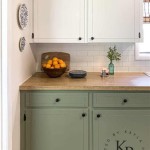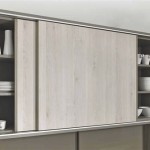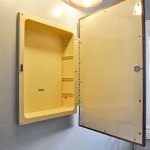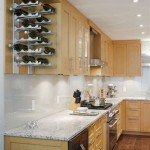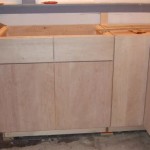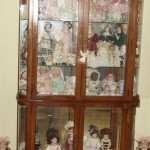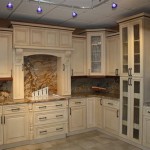Kitchen Cabinet Drawer Hardware: A Comprehensive Guide
The functionality and aesthetic appeal of kitchen cabinets are heavily influenced by the quality and type of drawer hardware employed. Beyond simply allowing drawers to open and close, hardware components contribute to ease of use, durability, and the overall design language of the kitchen. Selecting the appropriate hardware involves considering factors such as load capacity, extension type, closing mechanism, and style to ensure a cohesive and functional kitchen space. This article will delve into the various aspects of kitchen cabinet drawer hardware, providing a comprehensive understanding of the options available and their respective benefits.
Understanding Drawer Slides: The Foundation of Smooth Operation
Drawer slides, also known as drawer runners, are the mechanical components that enable drawers to move in and out of the cabinet. Their primary function is to provide smooth, stable, and reliable movement, even under heavy loads. Drawer slides are categorized based on their mounting location, extension type, and load capacity. The choice of drawer slide significantly impacts the drawer's functionality and the overall user experience.
Types of Drawer Slides:
Side-Mount Drawer Slides: These are mounted on the sides of the drawer box and the interior cabinet walls. They are a common and cost-effective option, suitable for a wide range of applications. Side-mount slides are typically available in various lengths and load capacities, offering flexibility in design and usage. They often feature a simple design, making them relatively easy to install.
Center-Mount Drawer Slides: As the name suggests, these slides are mounted underneath the center of the drawer box. They offer a clean, minimalist aesthetic and are often used in applications where side-mount slides are not feasible or desired. Center-mount slides typically have a lower load capacity compared to side-mount slides and may not be suitable for heavy-duty applications.
Under-Mount Drawer Slides: These slides are concealed beneath the drawer box, providing a sleek and modern appearance. They often feature soft-close mechanisms and are designed for smooth and quiet operation. Under-mount slides are typically more expensive than side-mount slides but offer superior aesthetics and functionality. They are often preferred in high-end kitchen designs.
Extension Types:
Partial Extension Drawer Slides: These slides allow the drawer to extend partially out of the cabinet, typically about three-quarters of its length. They are a cost-effective option for applications where full access to the drawer's contents is not essential.
Full Extension Drawer Slides: These slides allow the drawer to extend fully out of the cabinet, providing complete access to its contents. They are ideal for organizing and accessing items located at the back of the drawer. Full extension slides are typically more expensive than partial extension slides but offer greater convenience and functionality.
Over-Travel Drawer Slides: These slides allow the drawer to extend beyond the cabinet opening, providing even greater access to the drawer's contents. They are often used in specialized applications, such as pull-out pantries or drawers designed for specific items.
Load Capacity:
The load capacity of a drawer slide refers to the maximum weight it can support without compromising its functionality or durability. Selecting the appropriate load capacity is crucial to ensure the drawer operates smoothly and reliably over time. Factors to consider when determining the required load capacity include the size of the drawer, the type of items that will be stored in the drawer, and the frequency of use.
Drawer slides are typically rated for load capacities ranging from 25 lbs to over 100 lbs. For drawers intended for storing lightweight items such as utensils or linens, a lower load capacity may be sufficient. However, for drawers intended for storing heavy items such as pots, pans, or canned goods, a higher load capacity is essential.
Exploring Closing Mechanisms: Enhancing Functionality and User Experience
The closing mechanism of a drawer slide determines how the drawer closes and whether it incorporates features such as soft-close or self-close. These mechanisms contribute significantly to the user experience, enhancing convenience and reducing noise.
Types of Closing Mechanisms:
Standard Closing: These drawer slides rely on manual force to close the drawer. They are the most basic type of closing mechanism and do not offer any additional features such as soft-close or self-close.
Self-Closing: These drawer slides incorporate a spring-loaded mechanism that automatically pulls the drawer closed when it is pushed close to the cabinet. Self-closing mechanisms prevent drawers from being left slightly ajar and ensure they are fully closed.
Soft-Closing: These drawer slides feature a hydraulic or pneumatic mechanism that cushions the drawer as it closes, preventing it from slamming shut. Soft-close mechanisms provide a smooth, quiet, and controlled closing motion, enhancing the overall user experience and reducing noise.
The choice of closing mechanism depends on the desired level of functionality and the budget. Soft-close mechanisms are generally preferred in high-end kitchens due to their superior performance and quiet operation. Self-closing mechanisms offer a practical alternative for those seeking to prevent drawers from being left ajar.
Considering Drawer Front Hardware: Aesthetics and Ergonomics
Drawer front hardware, including knobs and pulls, serves both functional and aesthetic purposes. It provides a grip for opening and closing the drawer while also contributing to the overall style and design of the kitchen.
Types of Drawer Front Hardware:
Knobs: These are small, typically round or shaped handles that are attached to the drawer front with a single screw. Knobs are a classic and versatile option, suitable for a wide range of kitchen styles. They are generally less expensive than pulls and are easy to install.
Pulls: These are longer, typically bar-shaped handles that are attached to the drawer front with two or more screws. Pulls provide a more substantial grip than knobs and are often preferred for larger drawers or drawers that require greater force to open. They come in a variety of styles, from sleek and modern to traditional and ornate.
Materials and Finishes:
Drawer front hardware is available in a wide range of materials and finishes, including:
Metal: Metal hardware is durable, long-lasting, and available in a variety of finishes, such as stainless steel, chrome, brushed nickel, and antique brass.
Wood: Wood hardware adds a touch of warmth and natural beauty to the kitchen. It is often used in traditional or rustic kitchen designs.
Ceramic: Ceramic hardware is available in a variety of colors and patterns, adding a decorative element to the kitchen. It is often used in vintage or eclectic kitchen designs.
Glass: Glass hardware adds a touch of elegance and sophistication to the kitchen. It is often used in modern or contemporary kitchen designs.
The choice of material and finish should complement the overall style of the kitchen and the other hardware components. Consider the color and texture of the cabinets, countertops, and appliances when selecting drawer front hardware to ensure a cohesive and visually appealing design.
Ergonomics:
In addition to aesthetics, ergonomics should also be considered when selecting drawer front hardware. The size and shape of the hardware should be comfortable to grip and use. Consider the height and reach of the individuals who will be using the kitchen and select hardware that is appropriate for their needs.
Larger pulls are generally easier to grip than smaller knobs, especially for individuals with limited dexterity. The spacing between the screws on pulls should also be considered, as wider spacing can provide a more secure grip.
The selection of kitchen cabinet drawer hardware is a multifaceted process that requires careful consideration of functionality, aesthetics, and ergonomics. By understanding the different types of drawer slides, closing mechanisms, and drawer front hardware available, homeowners and designers can create kitchens that are both beautiful and functional.

Best Kitchen Cabinet Hardware 2024

Amerock Winsome 3 4 In 96 Mm Matte Black Cabinet Drawer Pull Bp36766fb The Home Depot

Ravinte 1 4 Inch Kitchen Cabinet Knobs Drawer Dresser Ma

How To Choose Between Knobs Or Pulls On Kitchen Cabinets

Cabinet Hardware The Home Depot

7 Unique Kitchen Cabinet Hardware Options

Set Of 6 Mini Cast Iron Skillet Drawer Pulls Decorative Kitchen Cabinet Knobs 2 25 Kroger

3 75 5 6 7 Cabinet Drawer Pulls

6 Tips To Choose The Right Cabinet Hardware Signature Home Services

How To Use Brass Cabinet Hardware Around Your Home
Related Posts


